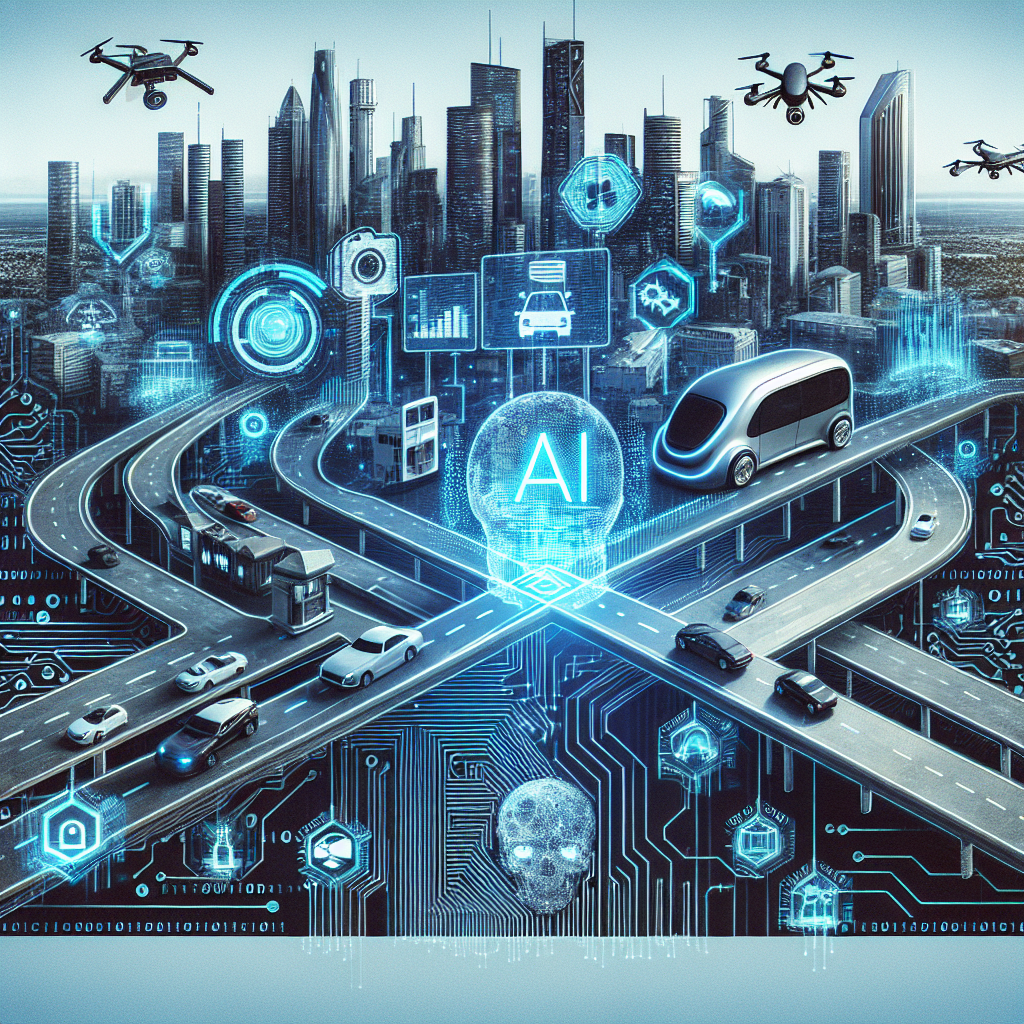Artificial Intelligence (AI) has revolutionized various industries, including transportation. From autonomous vehicles to predictive maintenance systems, AI has the potential to enhance efficiency, safety, and sustainability in transportation systems. However, along with its benefits, AI also poses risks that need to be carefully considered, especially when it comes to impacts on infrastructure. In this article, we will explore the risks of AI in transportation and discuss its potential impacts on infrastructure.
Risks of AI in Transportation:
1. Cybersecurity Threats:
One of the primary risks of AI in transportation is cybersecurity threats. As transportation systems become more reliant on AI algorithms and connected devices, they become vulnerable to cyber attacks. Hackers could potentially disrupt traffic flow, cause accidents, or even take control of autonomous vehicles. Ensuring the security of AI systems in transportation is essential to prevent such risks.
2. Safety Concerns:
While AI has the potential to improve safety in transportation by reducing human error, it also poses safety concerns of its own. AI systems may not always make the right decisions in complex and unpredictable situations, leading to accidents or malfunctions. Ensuring the safety of AI systems in transportation requires thorough testing, validation, and regulatory oversight.
3. Infrastructure Challenges:
The integration of AI in transportation systems can pose challenges for existing infrastructure. For example, autonomous vehicles require specialized infrastructure, such as smart roads and traffic signals, to operate safely and efficiently. Upgrading infrastructure to support AI technologies can be costly and time-consuming, especially for municipalities with limited resources.
4. Data Privacy Issues:
AI systems in transportation rely on large amounts of data, including real-time traffic information, passenger details, and route preferences. Ensuring the privacy and security of this data is crucial to protect individuals’ rights and prevent unauthorized access or misuse. Implementing robust data protection measures and compliance with privacy regulations are essential to address data privacy issues in AI-powered transportation systems.
5. Job Displacement:
The automation of transportation tasks through AI technologies could lead to job displacement for drivers, dispatchers, and other transportation workers. As autonomous vehicles become more widespread, the demand for traditional transportation jobs may decrease, impacting the livelihoods of many workers. Addressing the social and economic impacts of AI on transportation employment is crucial to ensure a smooth transition to automated systems.
Impacts on Infrastructure:
1. Smart Infrastructure:
AI technologies in transportation require smart infrastructure to support their operations effectively. Smart roads, traffic signals, and communication systems are essential components of an AI-powered transportation network. Investing in smart infrastructure can improve traffic flow, reduce congestion, and enhance safety for all road users.
2. Maintenance and Monitoring:
AI systems can help optimize maintenance and monitoring of transportation infrastructure, such as bridges, tunnels, and highways. Predictive maintenance algorithms can detect potential failures before they occur, allowing for timely repairs and cost savings. Monitoring systems equipped with AI can analyze traffic patterns, detect anomalies, and improve overall infrastructure performance.
3. Traffic Management:
AI-powered traffic management systems can optimize traffic flow, reduce congestion, and improve safety on roadways. Machine learning algorithms can analyze real-time traffic data, predict traffic patterns, and recommend efficient routes for vehicles. By integrating AI into traffic management systems, cities can enhance mobility, reduce emissions, and improve overall transportation efficiency.
4. Sustainability:
AI technologies in transportation can contribute to sustainability efforts by reducing emissions, improving fuel efficiency, and promoting alternative transportation modes. Autonomous vehicles, for example, can be programmed to drive more efficiently, reducing fuel consumption and greenhouse gas emissions. AI-powered public transportation systems can optimize routes, schedules, and capacity, leading to a more sustainable transportation network.
FAQs:
1. How can AI improve safety in transportation?
AI can improve safety in transportation by reducing human error, enhancing predictive maintenance systems, and optimizing traffic management. Autonomous vehicles equipped with AI technologies can navigate roads more safely than human drivers, while predictive maintenance algorithms can detect potential infrastructure failures before they occur. AI-powered traffic management systems can optimize traffic flow, reduce congestion, and improve overall safety on roadways.
2. What are the cybersecurity risks of AI in transportation?
Cybersecurity risks of AI in transportation include potential attacks on connected vehicles, traffic management systems, and infrastructure. Hackers could disrupt traffic flow, cause accidents, or take control of autonomous vehicles through cyber attacks. Ensuring the security of AI systems in transportation requires robust cybersecurity measures, encryption protocols, and regular updates to protect against potential threats.
3. How can AI impact infrastructure in transportation?
AI can impact infrastructure in transportation by requiring smart roads, traffic signals, and communication systems to support its operations effectively. Smart infrastructure is essential for the safe and efficient operation of AI-powered transportation systems. Upgrading infrastructure to support AI technologies can improve traffic flow, reduce congestion, and enhance safety for all road users.
4. What are the data privacy issues associated with AI in transportation?
Data privacy issues associated with AI in transportation include the collection, storage, and sharing of personal data, such as real-time traffic information, passenger details, and route preferences. Ensuring the privacy and security of this data is crucial to protect individuals’ rights and prevent unauthorized access or misuse. Implementing robust data protection measures, encryption protocols, and compliance with privacy regulations are essential to address data privacy issues in AI-powered transportation systems.
In conclusion, while AI has the potential to revolutionize transportation systems and improve efficiency, safety, and sustainability, it also poses risks that need to be carefully considered. From cybersecurity threats to safety concerns and infrastructure challenges, addressing the risks of AI in transportation is essential to ensure the safe and effective operation of AI-powered transportation networks. By implementing robust cybersecurity measures, enhancing infrastructure, addressing data privacy issues, and mitigating job displacement, cities and municipalities can harness the benefits of AI while minimizing its risks in transportation.

